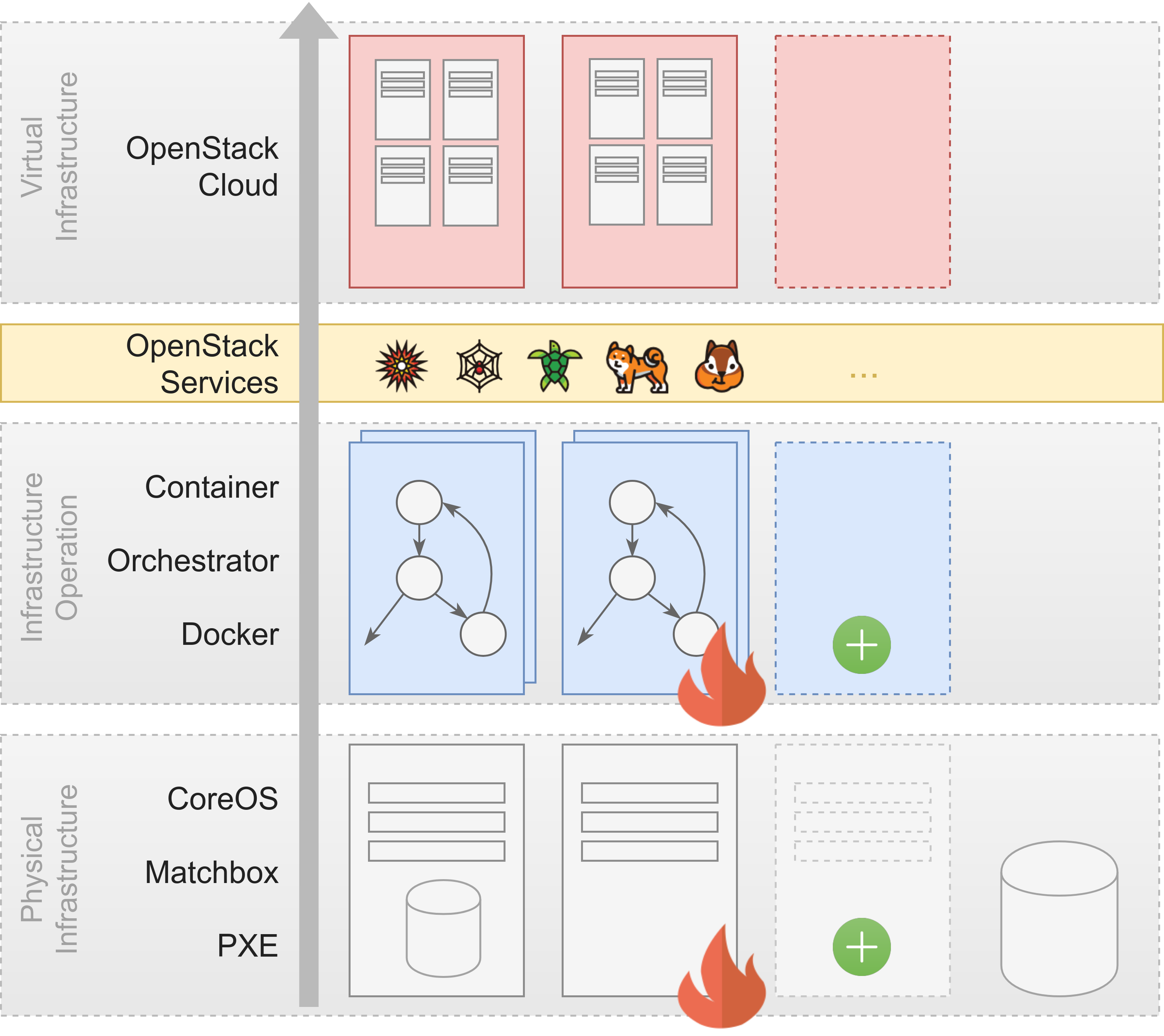Omistack is developed with the concept of a Vertical Immutable Infrastructure in mind. What does this mean?
- Vertical: Cloud native from application to physical layer
- Immutable: Detect separated state at run time
Our Paradigms
- Single Point of Truth: Declarative - explain result, not the path
- Phoenix Server: Replace instead of change
- Self Contained State Machine: Avoid configuration drift
Motivation
Maintaining a physical server cluster can by a time consuming and error prone task. Continuous Delivery and Deployment (CI/CD) recently becomes common standard on top of Infrastructure as a Service (IaaS) Clouds. Omistack takes modern well-known CI/CD concepts down to the physical servers.
Architecture Overview
A declarative description of the server cluster defines the required deployment state of an application installation. The pre-configured bootstrap entity (Seed node) rolls out configuration and runtime software. Each component configures, deploys, and manages its state autonomously.

A runtime component in this context can be an operating system image, or a container image for application software. This architecture allows users to create or replace the components. Fail fast & retry guarantees an eventual success. The Seed node as a central entity is only required for initialization or for changes, to avoid a single point of failure .
